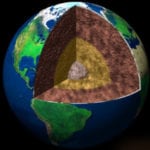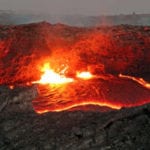 Music
Music  Music
Music  History
History 10 Less Than Jolly Events That Occurred on December 25
 Weird Stuff
Weird Stuff 10 Funny Ways That Researchers Overthink Christmas
 Politics
Politics 10 Political Scandals That Sent Crowds Into the Streets
 Weird Stuff
Weird Stuff Ten Bizarre Facts About The Doge Meme
 Our World
Our World 10 Ways Your Christmas Tree Is More Lit Than You Think
 Movies and TV
Movies and TV The 10 Coolest Stars to Set Sail on The Love Boat
 History
History 10 Things You Didn’t Know About the American National Anthem
 Technology
Technology Top 10 Everyday Tech Buzzwords That Hide a Darker Past
 Humans
Humans 10 Everyday Human Behaviors That Are Actually Survival Instincts
 Music
Music 10 Surprising Origin Stories of Your Favorite Holiday Songs
 History
History 10 Less Than Jolly Events That Occurred on December 25
 Weird Stuff
Weird Stuff 10 Funny Ways That Researchers Overthink Christmas
Who's Behind Listverse?

Jamie Frater
Head Editor
Jamie founded Listverse due to an insatiable desire to share fascinating, obscure, and bizarre facts. He has been a guest speaker on numerous national radio and television stations and is a five time published author.
More About Us Politics
Politics 10 Political Scandals That Sent Crowds Into the Streets
 Weird Stuff
Weird Stuff Ten Bizarre Facts About The Doge Meme
 Our World
Our World 10 Ways Your Christmas Tree Is More Lit Than You Think
 Movies and TV
Movies and TV The 10 Coolest Stars to Set Sail on The Love Boat
 History
History 10 Things You Didn’t Know About the American National Anthem
 Technology
Technology Top 10 Everyday Tech Buzzwords That Hide a Darker Past
 Humans
Humans 10 Everyday Human Behaviors That Are Actually Survival Instincts
10 ‘What If’ Scenarios About The Earth’s Geography And Climate
Alternate history usually examines the consequences and implications of different decisions made by humans at certain times in history. But unless we live in a completely deterministic universe, we can go back even further into deep time to explore the possibilities of very different Earths.
10 What If Pangaea Had Never Broken Up?
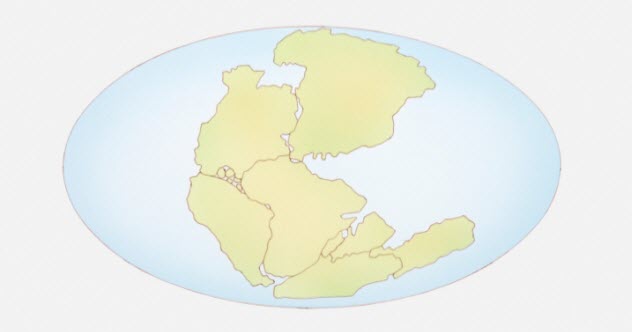
From 300 million to 200 million years ago, the world’s continents were fused as a single landmass called “Pangaea,” slowly drifting apart to create the continents we know today, while causing some interesting situations like India crashing headlong into Asia’s underside and raising the Himalayas. But what if tectonic drift had never happened and Pangaea still dominated one hemisphere with a great Tethys world ocean on the other?
Most likely, we would have a less diverse world biologically because the development of different species occurs mainly through geographic isolation, which causes selective pressures and the development of new genetic traits. Much of the interior would be arid as moisture-bearing clouds wouldn’t reach very far inland. With the excess mass affecting the Earth’s spin, most of the landmass on Earth would be in the hot equatorial regions.
When compared to our world, Earth would be roughly 20 degrees Celsius (36 °F) hotter during summer. It would also experience massive typhoons due to the enormous circulation system in the Tethys that would be unimpeded except by island chains or shallow continental shelves.
During the second historical Pangaean period, mammals dominated in tropical and water-rich monsoon areas while reptiles dominated the great arid areas, largely because mammals use more water when they excrete. Studies of a transection of Pangaean fossil records show tropical regions dominated by traversodont cynodonts, an extinct order of pre-mammals, while the temperate regions were largely occupied by procolophonoids, which resembled stocky lizards and are distantly related to modern turtles.
Different regions of a modern Pangaea might have been dominated by completely different orders of life, a variety of tropical mammal and mammal-like creatures populating the hot and wet regions, and reptiles and pseudoreptiles ruling the roost in the dry interior and temperate regions. Intelligent life would have been unlikely to develop due to the relative stasis of the environment, but if it had, its effect on the opposite climatic region would have been dire.
9 What If The Earth Had No Tilt?

During the year, seasons result from our tilted Earth revolving around the Sun and exposing the different hemispheres to various levels of sunlight. Without the Earth’s 23-degree tilt, every day would have approximately 12 hours of daylight for each region on the Earth, while the Sun would be on the horizon forever at the poles.
The weather would be much more uniform, although there would be some changes due to variation in the distance from the Earth to the Sun over the year. The northern latitudes would experience a constant winter environment, while the equatorial regions would be humid tropics with heavy rainfall. Walking north or south from the equator, you would encounter regions with perpetual summer, then temperate spring or autumn, and finally a wintry wonderland becoming more uninhabitable as you approached the poles.
Many people believe that the Earth’s tilt was caused by a collision with a large object, an event that also caused the formation of the Moon. According to the Rare Earth Hypothesis, this was a good thing for the development of life. A planet with no tilt might not support an atmosphere, with gases evaporating into space from the full blast of sunlight at the equator and freezing and falling to Earth at the poles.
If life survived, the situation could still be disastrous for any intelligent species like us. With seasons nonexistent and constant rainfall in the tropics, growing crops the traditional way would be impossible. Disease would also be more prevalent around the equator. If an intelligent species like us did develop, they would have little impetus to start an industrial revolution, which was largely driven by technologies first made for heating homes in cold winter months.
8 What If The Earth Had A Different Tilt Or Rotation?

Altering the Earth’s tilt would drastically alter the climate and environment, with the difference in the angle changing the amount of sunlight reaching the Earth and the strength of the seasons. If the Earth was tilted a full 90 degrees, seasonal changes would be the most extreme. As the Earth revolved around the Sun, the poles would alternately point directly at the Sun and be perpendicular to the Sun. One hemisphere would be bathed in sunlight and hot temperatures, and the other in frigid darkness. Three months later, both poles would have a low Sun angle and our equatorial regions would have 12 hours of Sun and 12 hours of night per day, with the Sun rising in the north and setting in the south.
Life developing on such a world may be unlikely due to yearly cycles of radiation sterilization in summer and deep freezing in winter, though some organisms on Earth known as extremophiles might be capable of surviving such conditions. If such extremophiles developed into complex life, they would probably have strong hibernation or migration adaptations.
Artist and avid dreamer Chris Wayan has explored a number of scenarios by altering the points around which the Earth rotates. He maintained the 23.5-degree angle but altered the locations of the poles on the Earth’s surface. In one scenario dubbed “Seapole,” he tilted an Earth globe to place both poles above water then extrapolated the effect on the climate. By removing the ice domes of Antarctica and Greenland, he created a much warmer and wetter world with a potentially higher biomass and diversity.
A reverse scenario called “Shiveria” placed ice caps over land on both ends (China and northern South America), creating a generally colder and drier world. However, Antarctica would be tropical and the Mediterranean a hothouse he calls “the Abyss.”
Flipping the Earth upside down completely reverses water currents, winds, and rainfall patterns, creating a world where China and North America are deserts but the overall situation is probably more fertile for life. XKCD also explored the idea, rotating the Earth to put the poles on the equator, a scenario very similar to Shiveria. The site explores the implications for our world cities, turning Manila into the equivalent of Reykjavik, Moscow into an arid desert, and London into a sweltering metropolis.
7 What If South America Was An Island Continent?
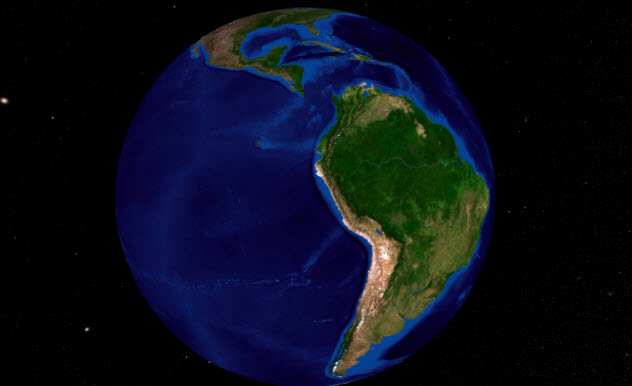
From the late Jurassic until about 3.5 million years ago, North and South America were separated by water. Independent evolution continued on both continents for almost 160 million years with some limited biotic exchange via nascent Caribbean islands from 80 million years ago and the Central American peninsula from 20 million years ago.
At that time, South America, like Australia, was dominated by marsupials, while also having a number of bizarre, placental, hooved animals (including the first camels) and the edentate (“lacking teeth”) ancestors of anteaters, armadillos, and sloths. North America, Eurasia, and Africa were dominated by placental mammals without any surviving marsupial species.
All living marsupials actually originated from South America, with kangaroos and opossums sharing genetic ancestors. The South American marsupials may have included many carnivorous species—pouched predators called “borhyaenoids” that resembled weasels, dogs, bears, and saber-toothed tigers—although we can’t be sure they actually carried their young in pouches.
When the two American continents connected, North American mammals spread across South America, outcompeting most marsupial species. Meanwhile, South American reptiles, birds, and a small number of mammals moved north.
If the two continents had remained separate, it’s likely that many of the marsupials would have survived into the present, creating an environment as wild and alien as Australia. Regrettably, if humans or a close analog had arrived, they would have probably brought placental mammals from Eurasia with them, potentially causing an extinction crisis similar to that faced by Australian marsupials in our world.
6 What If The Mediterranean Had Stayed Closed?
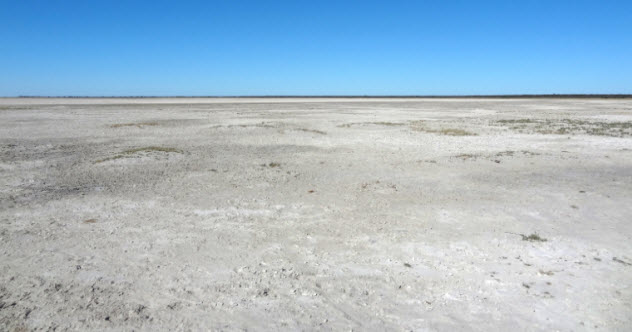
Roughly six million years ago, the Strait of Gibraltar closed, with the Mediterranean connected to the Atlantic by only two small channels. The results were dire. As tectonic pressures pushed Africa toward Europe, the channel allowing water to flow out was sealed, but salty water continued to rush in from another. Unable to exit, the water in the Mediterranean began to evaporate, creating a vast salty brine like a massive Dead Sea, with a 1.6-kilometer-high (1 mi) layer of salt forming on the seafloor and most of the sea life in the Mediterranean going extinct. This was the “Messinian salinity crisis.”
After hundreds of thousands of years, the Mediterranean was reconnected to the Atlantic in the “Zanclean flood.” In that event, the sea rapidly refilled, land bridges flooded between Europe and North Africa, animal species became isolated on islands where they underwent speciation, and Atlantic marine species were forced to quickly adapt to recolonize the Mediterranean.
What if this had never happened, and the Mediterranean had remained a desiccated salt pan? It’s likely that human beings would have reached Europe much earlier than in our world, simply migrating through the salty lowlands rather than taking a long detour through the Middle East.
Salt is a valuable resource. As civilization developed, it’s likely that cultures in the region would have exploited this resource, trading it to far-off regions of Africa and Asia. With salt necessary for human survival when eating a diet rich in cereals, its increased availability might have caused agriculture to develop faster and more successfully in the Western hemisphere.
That said, salt might been considered less valuable for having been more prolific, possibly with less religious or symbolic value as a cheap commodity. Saying someone was “worth their salt” might have become an insult rather than praise.
5 What If There Were No Large Metal Deposits On Earth?

Humans and animals require metals to survive. But what if metals like copper had never been concentrated into exploitable deposits, or they had all been located in regions inaccessible to early man, such as under the ice caps or the ocean? While the development of more efficient, advanced Stone Age technologies would have continued, it’s likely that entire avenues of development would have been blocked to humanity (or any intelligent life arising on such a world).
Even without metals, there would have been a transition out of the classic Neolithic era as the agricultural revolution saw the rise of settlements and more concentrated populations. The plow and the wheel would still have revolutionized life for this Stone Age society, but a lack of useful metals might have stunted the development of mining, trade, and social classes. The existence of sophisticated civilizations without metals in the Americas suggests something similar would have developed in Eurasia. However, if the lack of metal deposits also included gold and silver, the economies and art of such cultures might have appeared rather drab.
In Mesoamerica, the relative lack of metals led to the sophisticated use of the volcanic glass obsidian, which can be as sharp as a modern scalpel but is also rather brittle. The ancient Aztecs used obsidian to make swords edged with multiple glass blades as well as arrowheads, spears, and knives. It had deep religious significance, and its natural sharpness is one of the reasons Aztec culture was so enamored of self-sacrifice. With the sharp blades, cutting one’s tongue or ear to release blood in religious rituals wouldn’t have hurt as much as we might imagine.
Obsidian imported from Ethiopia and the Near East was also used in Egypt. However, its use to make knives and sickle blades in the predynastic period was slowly phased out as metallurgy developed, although it still had a place as an artistic material. Without metals, Egyptian civilization may have had a greater need for control of obsidian, expanding into the Near East and East Africa to secure key sources. In Europe, one of the richest sources of obsidian was the region around the Carpathian Mountains, from which another culture of glass-edged sword wielders might have emerged.
It’s unclear just how sophisticated a culture using only glass, stone, and ceramics might have become. Many advances in transportation, cooking, and engineering might have been impossible. Certainly, there couldn’t have been an industrial revolution as we know it. Although societies might have developed advanced knowledge of medicine and astronomy, they would have been unlikely to ever reach the Moon.
4 What If The Sahara Was Still Wet?

Until around 5,000 years ago, the Sahara was a lush land of lakes and grasslands, inhabited by hippos and giraffes. This was the African humid period, and it is still not clear to scientists exactly how it began and ended. This climate allowed early humans to migrate out of Africa. Otherwise, the Sahara would have proven to be a serious impediment. The transition to the present desert conditions probably happened about 3,000 years ago, forcing the inhabitants to migrate to more habitable regions.
But what if the humid period had never ended? During this period, there were several large lakes in southern Libya. Lake Chad was also much larger. Around these lakes, civilizations that used tools and created art left many bones and artifacts that are now buried in the forbidding sands. In 2000, a team of paleontologists searching for dinosaur bones in southern Niger stumbled upon the remains of dozens of human individuals. They also found clay potsherds, beads, and stone tools as well as the bones of hundreds of crocodiles, fish, clams, turtles, and hippos.
In 2003, a follow-up expedition discovered at least 173 burial sites. According to the design of the pottery shards, these tribes were identified as the extinct Kiffian and Tenerian tribes. Meanwhile, fossil records have shown desert areas of the Sudan were once home to vast herds of cattle.
Historically, the desert acted as a barrier separating sub–Saharan African cultures from those in North Africa and the Mediterranean. With technological developments of the Fertile Crescent unable to spread easily across the Sahara, many Eurasian innovations either never arose in sub–Saharan Africa or had to be independently developed.
On the other hand, a lush Sahara would have sparked the development of settled towns, cities, and centralized governments in the region from an early period. In addition to increasing the area occupied by civilized peoples and the reach of the great ancient trade networks, there would have been more genetic, linguistic, and cultural mixing between Africa and Eurasia as well.
The existence of tropical diseases might have been a problem in some areas. It’s also likely that the cultures of a wet Sahara would have had varying levels of development, just like other regions. But overall, there would have been a higher level of human civilization, probably leading to increased development. The Sahara might have been home to a large unified culture like China, with major effects on the development of Mediterranean and European civilizations.
3 What If There Was No Gulf Stream?
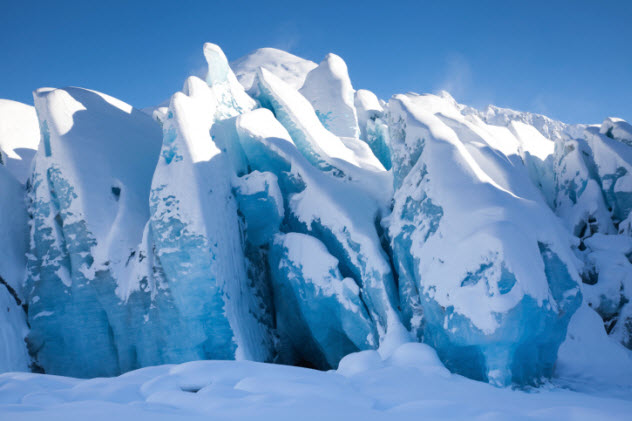
The Gulf Stream is the most important ocean current system in the northern hemisphere, stretching from Florida to northwestern Europe. It brings warm Caribbean waters across the Atlantic, warming Europe. Without the Gulf Stream, northern Europe would be as cold as Canada at the same latitude. The system is driven by the differences in temperature and salinity of seawater, with denser, colder, and saltier water from the North Atlantic flowing south until it warms up and becomes less dense. Then it flows north again.
This system has shut down several times due to influxes of freshwater and variations in the amount of solar energy hitting the Earth. The Gulf Stream returned 11,700 years ago at the end of the last ice age, which might not have happened without higher levels of energy from the Sun. In that case, northwestern Europe would have stayed in ice age conditions for a longer period, with a larger Arctic ice cap and more extensive Alpine glaciers.
The region would have been unsuitable for agriculture and the development of civilization. The inhabitants of northwestern Europe might have been more like the Saami or the Inuit than the historical cultures of our world. Western civilizations would have been limited to the Mediterranean, North Africa, and the Middle East. On the plus side, it would have probably been too cold for marauding Central Asian tribes like the Huns or Mongols to gallop in and kill everyone.
Another interesting scenario would occur if the Gulf Stream returned after the development of settled civilization. As the ice retreated, a new frontier would open to settlement and conquest for the cramped cities along the southern Mediterranean coast.
2 What If Doggerland Still Existed?
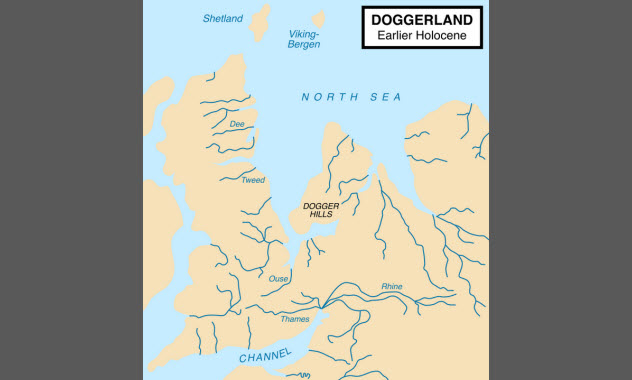
Until 8,200 years ago, there was a low-lying landmass in the North Sea that has since been dubbed “Doggerland,” or “Britain’s Atlantis.” It was a remnant of a greater Doggerland covering the entire North Sea area, a vast land of hills, marshland, heavily wooded valleys, and swamps inhabited by Mesolithic people who migrated with the seasons, hunting and gathering berries for survival. Their artifacts along with animal bones are occasionally discovered by North Sea fishermen. Climate change caused the region to be slowly flooded, forcing the inhabitants to move.
The last portion of greater Doggerland was centered around what is now Dogger Bank, lying just below the North Sea waters. Recent analysis has suggested that this last remnant and its inhabitants were wiped out 8,200 years ago by a 5-meter (16 ft) tsunami caused by the collapse of 3,000 cubic kilometers (720 mi3) of sediment, an event known as the “Storegga slide.”
But what if the Storrega slide had never occurred or if Dogger Bank had been slightly higher?
If humans had survived there, they would have had a major impact on the development of civilization, even if it were delayed due to their isolation. The Mesolithic inhabitants probably would have been replaced by Neolithic invaders from the mainland, who in turn might have been overwhelmed by Celtic invaders as in the British Isles.
Later, the Celts might have been displaced by the expansion of Germanic invaders, especially as the Celts would probably have had a lower population density in Doggerland than in the British Isles and mainland Europe. North Germanic Doggerlanders might have formed a cultural continuity between the Norse cultures and those of Britain. It’s also possible that Doggerland could have been colonized by Balts, a group that has ceased to exist, or a group that never existed in our world.
Regardless, a surviving Doggerland would still be extremely susceptible to climate change. Global warming would present many of the same existential problems facing low-lying islands in the Pacific. However, a wealthy, developed Northern European country facing imminent extinction might have more influence in addressing environmental policies in Europe.
1 What If There Had Been Slightly Less Ice During The Ice Ages?
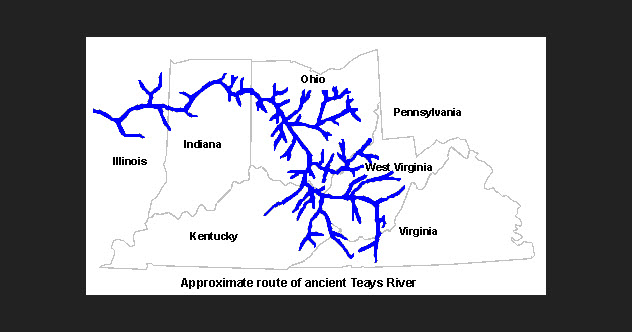
In 2006, Steven Dutch from the University of Wisconsin presented a paper to the Geological Society of America about the implications of slightly less icy ice ages. He considered what would have happened if the North American ice sheets had never extended far below the Canadian border, and Scottish and Scandinavian ice sheets had never merged. This would have had three major effects: the Missouri River would have retained its original course into the Hudson Bay rather than changing to its present course, the Great Lakes and the Ohio River would never have formed, and the English Channel would not exist, either.
In our world, when the Scandinavian and Scottish ice caps formed, they created a large proglacial lake which overflowed into the ancestral Rhine-Thames river system, creating the English Channel. If the two caps had never joined, the water would have flowed north instead, leaving a land bridge connecting England to mainland Europe. The historical British defensive advantage vis-a-vis mainland Europe would have been nonexistent, which would have had major effects on human migration, settlement, and cultural diffusion patterns in the West.
Meanwhile in North America, the lack of ice caps would have changed the way drainage systems worked, with the pre-Pleistocene Teays River still in existence and the Niagara River retaining its ancient course. Niagara Falls would not have existed. The easiest passage across the Appalachians would have been the St. Lawrence River, greatly changing colonization patterns. Meanwhile, the changes to the Missouri River would have removed the convenient east-to-west waterways used by the Lewis and Clark expedition in our world.
If it still had happened, expansion across the North American continent by European invaders would have been a significantly slower process due to a reduced number of navigable waterways. This would probably have occurred via the North, possibly by a people resembling a mix of English and French cultures, or even people more culturally alien than we can possibly imagine.
David Tormsen wrote this list as an act of revenge against those in the online alternate history discussion community with an irrational dislike of geographical what ifs. Email him at [email protected]




